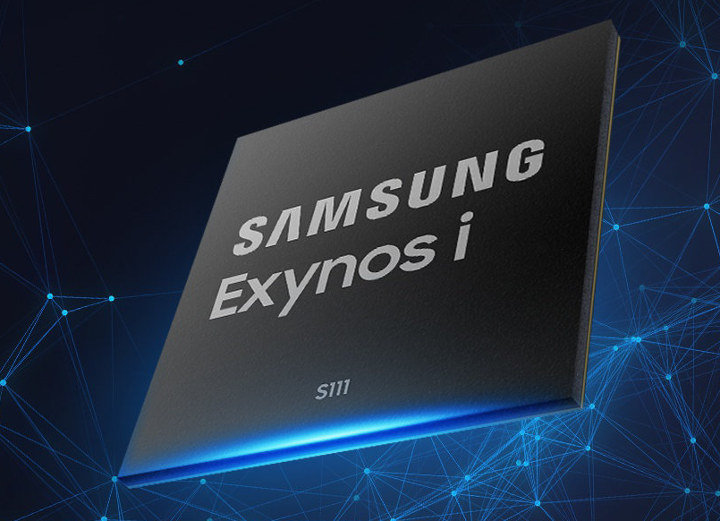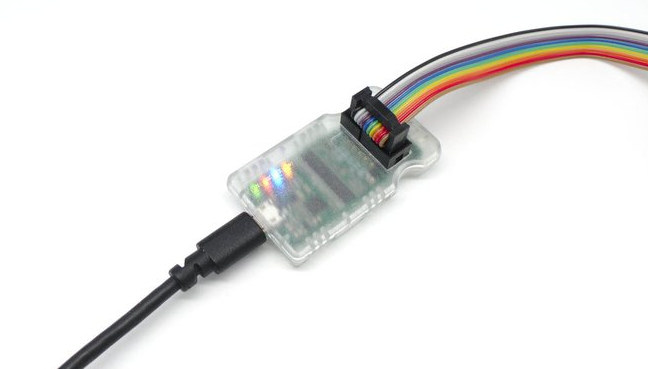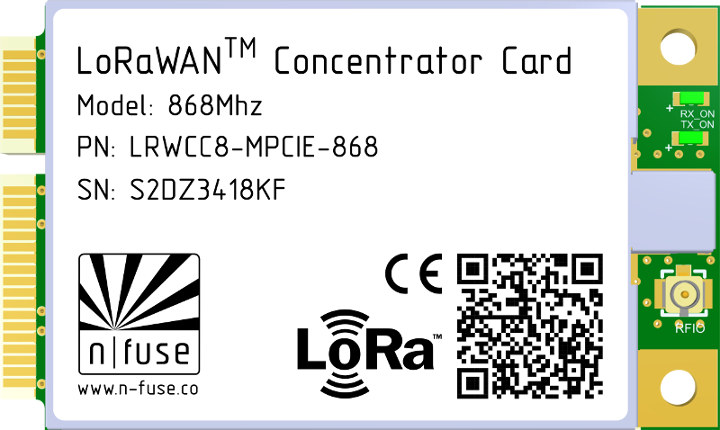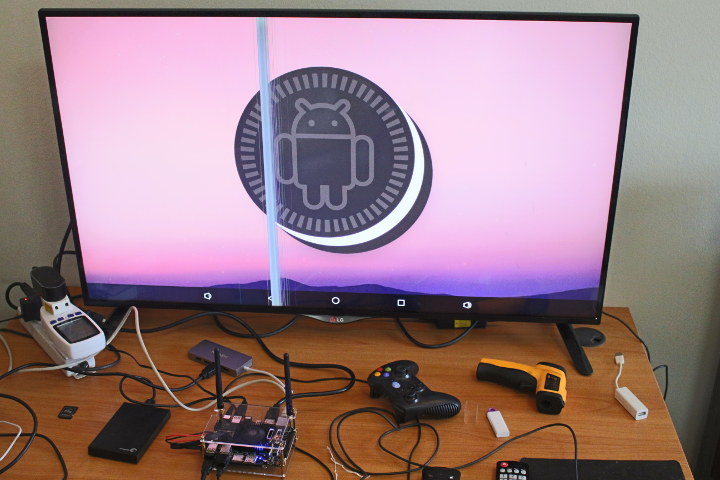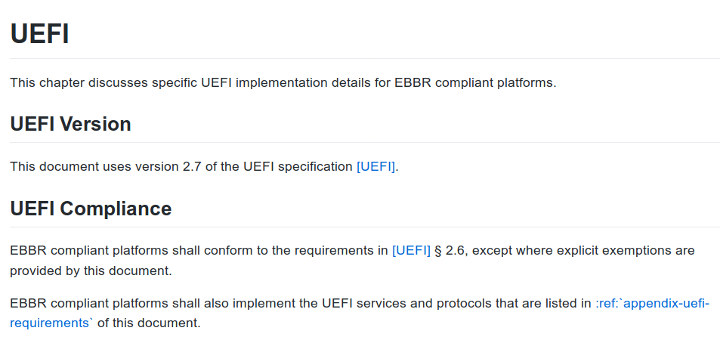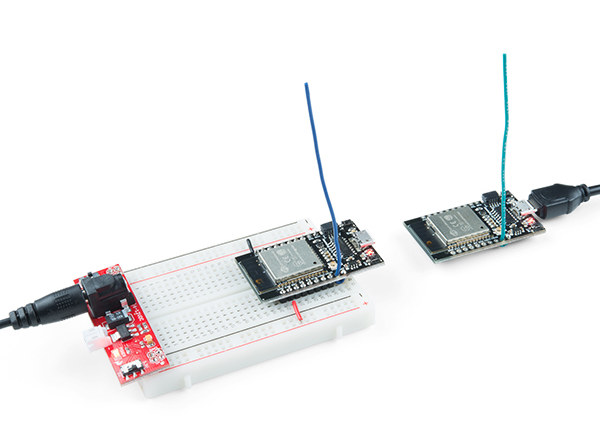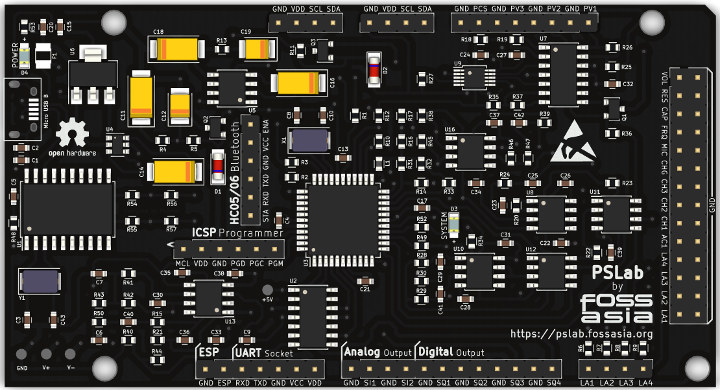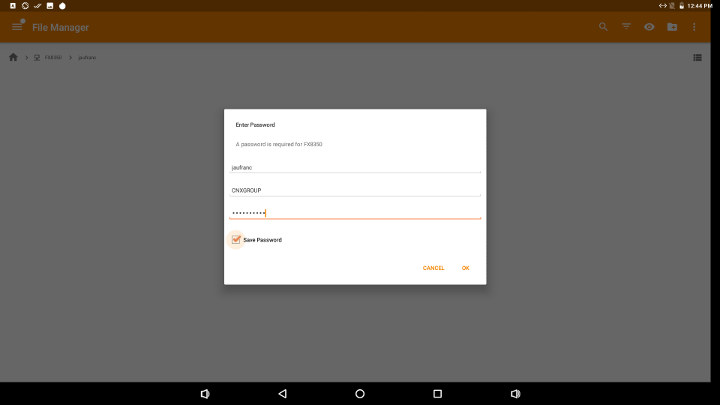Samsung has just announced their first NB-IoT solution with Exynos i S111 chipset with a single chip integrating an NB-IoT capable LTE modem, RF IC, an on-chip security sub-system, and a PUF (Physical Unclonable Function) security solution along with various components such as CPU, and SRAM. The chip apparently also integrates GNSS hardware with support for GPS, Galileo, etc… Exynos i S111 specifications: CPU – Arm Cortex-M7 @ 200MHz On-chip Memory – 512KB SRAM Modem – LTE Release 14 NB-IoT GNSS – GPS, Galileo, GLONASS, BeiDou Interfaces / Peripherals – USI, UART, I2C, GPIO, eSIM I/F, SDIO (Host), QSPI(Single/Dual/Quad IO mode), SMC Security – eFuse, AES, SHA-2, PKA, Secure Storage, Security Sub-System, PUF The chip is also said to features Samsung’s “advanced algorithms for wider coverage”. Many NB-IoT GPS trackers currently implement a two modules solution, so the latest Exynos chip should enable more compact designs. Samsung did not publish […]
μArt is a Universal USB to UART-TTL Adapter with Safety Features (Crowdfunding)
I’ve never had specific issues with USB to TTL debug boards personally, but potentially you could damage the target if you select one with the wrong voltage, and for more advanced use cases often do not include GPIOs. μArt USB to UART-TTL Adapter aims to solve those issue with wide voltage range (1.8 to 5.4V), safety features like galvanic isolation or over-current protection, and one header exposing I/Os. Key features: Universal TTL-UART – 1.8 – 5.4 V, up to 3M speed, standard & non-standard baudrates, pins for handshaking and flashing various MCU families, wide OS-support Galvanic isolation, integrated pull-ups, signal- and power-filters Over-current protection, reverse-polarity protection, ESD protection, mechanical protection Voltage-autosensing, LEDs, GPIOs, software-configurable Dimensions – 58 x 33 x 14 mm Weight – 16 grams Everything is also packaged in a case contrary to most (all) other boards in the market. uART-USB-TLL-Board The developer provides drivers for Windows, Linux, […]
n-fuse LoRaWAN Concentrator mini PCIe Card Comes with either SX1301 or SX1308 Chip
Most gateways are based on Semtech SX1301 chip, but the company unveiled a SX1308 chip for picocell gateways back in 2016 that’s supposed to be cheaper and used indoors. Designs have been slow to come to market, but a few have been launched recently including n-fuse LRWCCx-MPCIE LoRaWAN concentrator mini PCIe card that comes with either SX1301 or SX1308 chip, and is compatible with Semtech’s Pico Gateway design. n-fuse LRWCCx-MPCIE key features & specifications: LoRa Connectivity SX1301/ SX1308 digital base band processor with dual SX1257 Tx/Rx front-ends Output power level up to 23 dBm u.FL connector (50 Ω impedance) for external antenna 868 MHz model Frequency Range – 863 to 870 MHz Sensitivity – Up to -124 dBm at SF7 (BW 125 KHz), up to -138 dBm at SF12 (BW 125 KHz) 915 MHz model Frequency Range – 915 to 928 MHz Sensitivity – Up to -125 dBm at SF7 […]
Review of Firefly-RK3399 Board with Android 8.1 Firmware
Last week, I tested Android 7.1 on NanoPC-T4 Rockchip RK3399 SBC, and this week, I’ve given a try at Android 8.1 (Beta) on Firefly-RK3399 Board. Since it’s still a beta version, I’m expecting some issues and we’ll have to see how it performs at this stage of development. Firefly-RK3399 Kit Assembly I had to do some assembly before starting the board. It took me some 30 minutes to complete, so I’ll quickly go through the steps. Beside the default kit, the company also sent me a fansink ($7.9) and an M.2 to SATA board + required cable ($16) which will be part of the assembly instructions. The first step is to peel off the protective films on both sides of the acrylic case. I then fastened my own 2.5″ hard drive with four screws provided in the default kit. I then installed the M.2 to dual SATA adapter board in […]
Embedded Base Boot Requirements (EBBR) Project Aims to Standardize Booting on Embedded Systems
Desktop and server systems relies on standardized interfaces between the bootloader and the OS like UEFI and ACPI, but for embedded systems the way the bootloader, often U-boot, handles the boot flow may vary greatly between targets. Arm and its partners already worked on this in the server space with the Server Base Architecture Specification (SBSA) , and more specifically the Server Base Boot Requirements (SBBR) within the specification that requires the use of both UEFI and ACPI on servers. Arm has now done something similar with the Embedded Base Boot Requirements (EBBR) project that targets specifically embedded systems, is based on a subset of UEFI, and works with either ACPI or device tree. EBBR specification once implemented in bootloaders like U-boot or Tianocore/EDK2 should allow a single version of an OS image to boot on multiple platforms without the per-platform customization required today.. In practical terms it means the […]
How to Make a Cheap Single Channel Gateway with an ESP32 LoRa Board
Actual LoRaWAN gateways based on Semtech SX1301 concentrator can be pretty expensive, and even if you take a LoRa gateway design based on Raspberry Pi for indoor placement or experimentation, price is still around $200. A much cheaper way (~$70) is to use a single channel LoRa gateway, which as the name implies only support one channel, which limits the number of nodes, and forces you to set the nodes at the same frequency as your gateway. Those are not really suitable for commercial offerings, but if you manage your own gateway and nodes that should be usable. If you only plan to implement a network with a dozen nodes or so, you could even use much cheap ESP32 LoRa board like the ESP32 LoRa 1-Channel Gateway sold on Sparkfun for $29.95. Hardware specifications: Connectivity WiFi and Bluetooth 4.2 LE via ESP32-WROOM-32 module with integrated PCB antenna LoRa @ 868 […]
Pocket Science Lab (PSLab) is an Open Source Hardware Electronics Lab
Last Saturday I created a virtual schedule for the Embedded Linux Conference Europe 2018 where I listed some of the sessions relevant to myself and hopefully regular readers of CNX Software, but due to scheduling conflicts one talk did not make it to the list: “Pocket Science Lab – An Open Source Hardware for Electronics Teaching & Learning” by FOSSASIA. The project is also referred to as PSLab, and aims to “create an Open Source hardware device that can be used for experiments by teachers, students, and citizen scientists to learn and teach electronics”. It looks interesting enough so let’s have a closer look. The project is inspired by the earlier expEYES project that combines with Raspberry Pi or other Linux platform to create an electronic labs, and the work by the Open Science Hardware community. PSLab key features and specifications: MCU – Microchip PIC24EP256GP204 16-bit microcontroller @ up to […]
Access SAMBA Shares in Android with File Browser by Astro
My go-to Android file manager used to be ES File Manager until… today. The free version of the app already had some annoying floating widgets and all sort of things you would be expect to be enabled by default, but the latest version requires you to install an app to enable SAMBA 2.0 support. I tried to keep up with the requirements, but the ad relies on Google Play services which was not installed in the firmware I used. The easiest way to solve the issue is probably to pay $2.99 for the PRO version, but for firmware without Google Play services it might not be possible to sideload it. So instead, I decided it was time to look for an alternative file manager with SAMBA support, since that’s the main feature I use in an Android file manager while doing reviews. I found two candidates File Commander – Free […]


